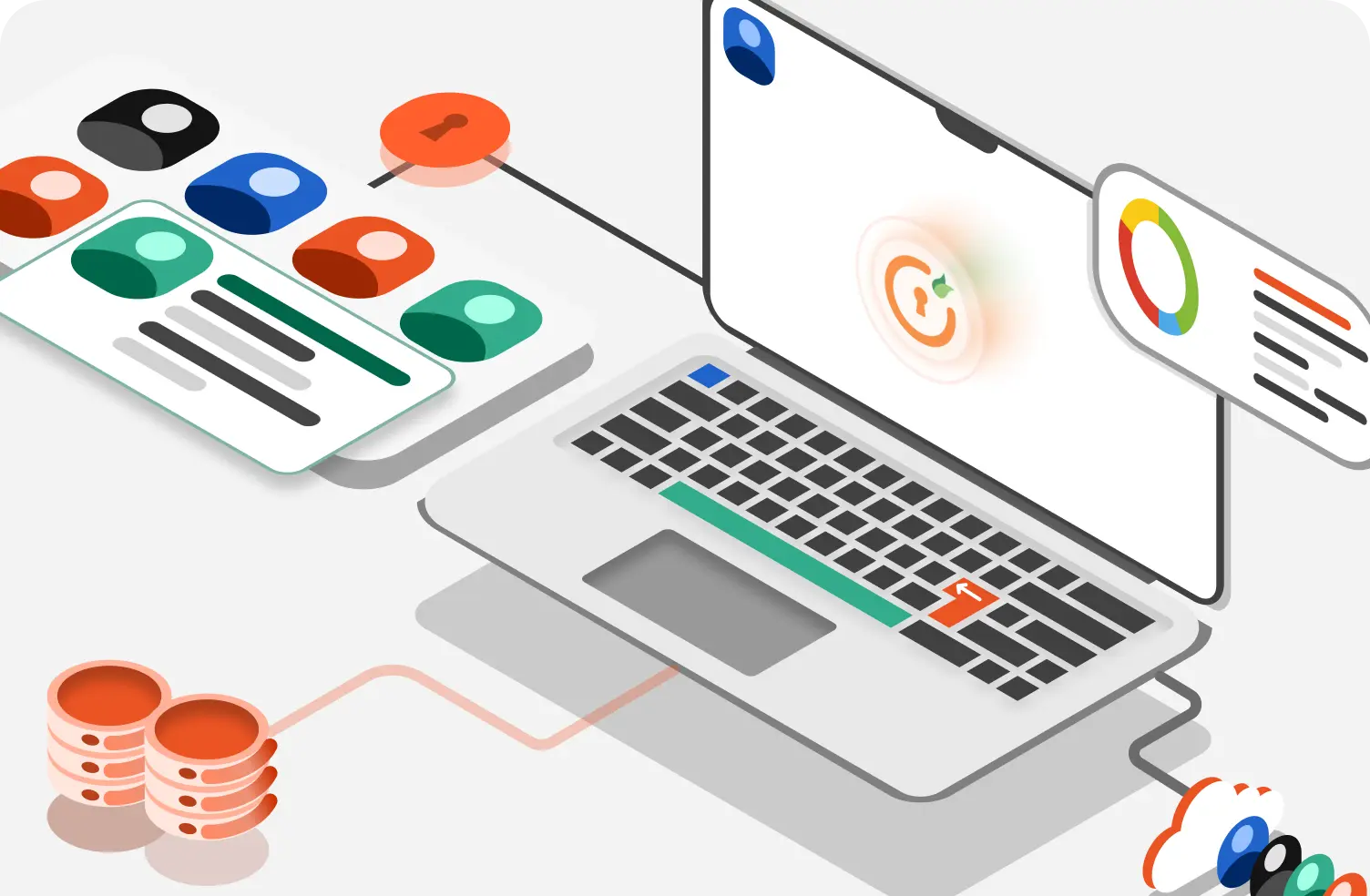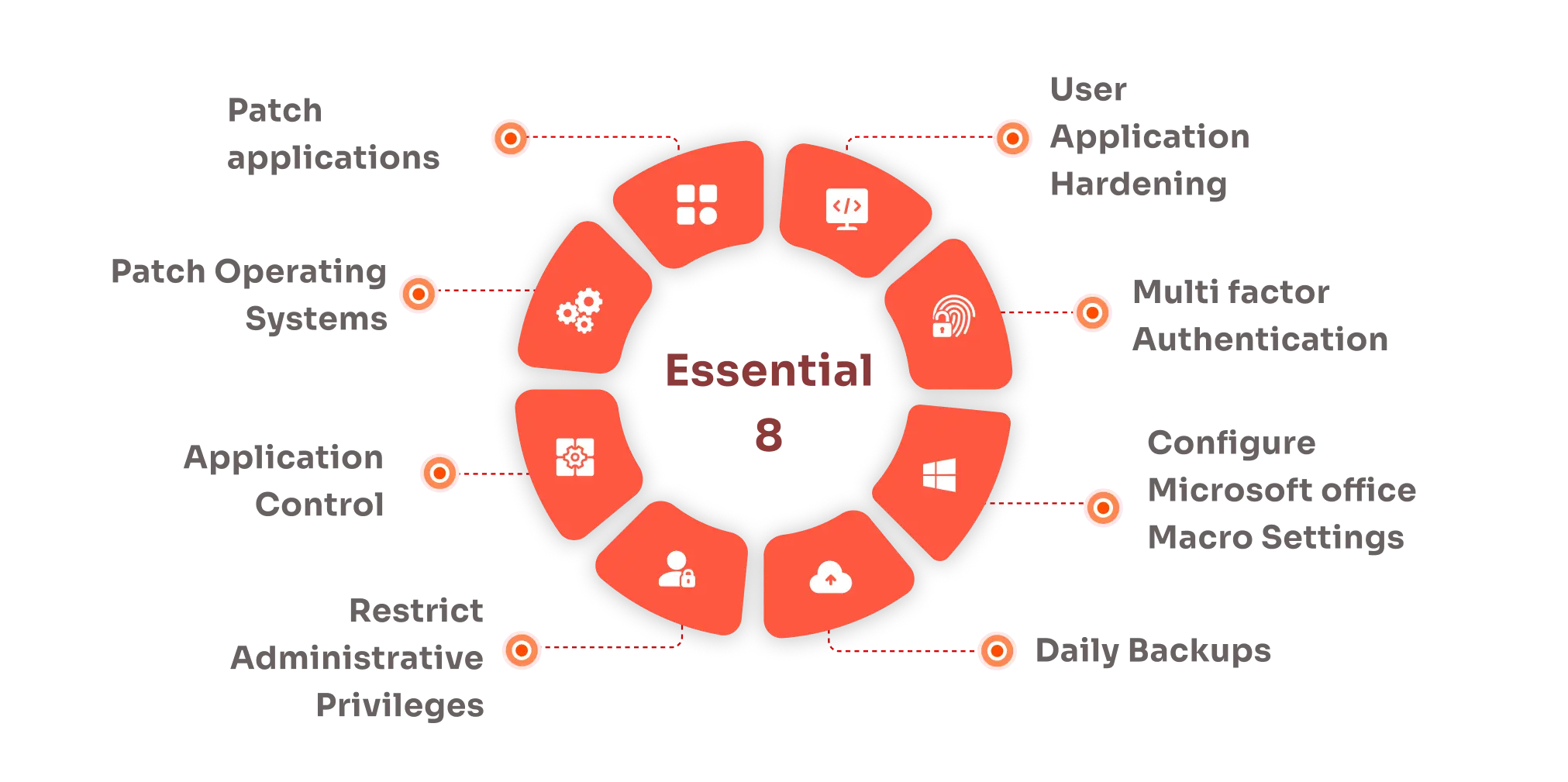In the current landscape, access management is of paramount importance due to the increasing prevalence of large-scale data breaches. In fact, a survey highlights that 61% of breaches involve the theft of credential data. Given the magnitude of this issue, solutions like IAM and PAM cannot be overlooked. Identity Access Management (IAM) and Privileged Access Management (PAM) stand as two primary types of access management systems extensively employed within organizations.
Should you pick PAM or IAM, Which one? What’s the difference between the two? Which one’s crucial for your organization?
Let us take a look at a closer look and find out
IAM: What is Identity Access Management?
In the realm of cybersecurity space, Identity Access Management (IAM) stands as a fundamental pillar, that regulates and secures passage of users to digital assets. IAM consists of processes such as - identification, authentication, and authorization, within an organization's digital ecosystem. This process of verification serves as a protective shield, preventing unauthorized access and data breaches that could compromise sensitive data, and applications, or compromise the system’s integrity in any way.
Zero Trust Security and IAM
IAM, in essence, signifies the meticulous orchestration of user profiles, entailing identification, authentication, and authorization mechanisms, all underpinned by unique digital identities. This dynamic field offers a bouquet of features that seamlessly align with the zero-trust paradigm in cybersecurity. In this paradigm, each user must confirm their identity whenever they seek access to servers, applications, services, or any other company data, fostering an environment of elevated security.
Versatility in IAM Deployment
The versatile landscape of IAM caters to both on-premises and cloud deployments, presenting a flexible canvas to organizations. Single Sign-On (SSO) and Multi-Factor Authentication (MFA) have emerged as one of the most crucial components of IAM. Using these two technologies, we are able to prevent unauthorized entry, utilizing SSO to streamline the journey across multiple applications once the user's identity is validated. On the other hand, Multi-Factor Authentication (MFA) adds an extra layer of protection by verifying passwords with an additional verification mechanism, which could range from security tokens to biometric verification.
PAM: What is Privileged Access Management?
Privileged Access Management (PAM) emerges as a subset of Identity and Access Management (IAM), its focus is to protect privileged accounts. As organizations navigate the complex landscape of user access, PAM stands out by honing in on a specific subset of users with a unique requirement: access to sensitive and privileged resources.
Privileged accounts are a handful of user accounts that have access to sensitive resources such as - databases, backend systems, and places where sensitive resources are stored. On one hand, IAM authorizes a user who has sought permission to access a system, while PAM restricts access rights to the minimum number of users required to perform authorized functions.
PAM’s Strategic Safeguarding Measures
PAM takes a proactive stance in safeguarding privileged accounts by employing strategic measures. For instance, it ensures that credentials for Privileged Accounts are stored in a separate, secure repository. This step minimizes the risk of theft or misuse by cyber threats. Additionally, PAM empowers administrators with tools to limit user access using features such as time restrictions, and bolstering control over sensitive areas.
Defense Against Credential Sharing
Another ingenious move by PAM is its dedication to reducing the risk of credential sharing by making sure every individual uses a unique login. It mandates that each individual uses their login credentials, thus restricting the practice of shared access. By doing so, PAM serves as a guardian for a company's most confidential user credentials, tokens, secrets, and keys.
Automatic Defense Against Cyberattacks
A remarkable advantage of PAM is its ability to significantly reduce the need for manual intervention. In times of cyber-attacks, PAM kicks into action, automatically locking down critical systems to prevent any unauthorized access or damage. In essence, PAM is the digital safeguard that ensures valuable assets remain inaccessible to potential threats, and that an organization's sensitive resources stay secure.
IAM VS PAM
Despite being related, IAM vs PAM are still distinct, even though they are often used interchangeably, even though they serve entirely different audience sets. The purpose of IAM solutions is to manage and monitor the security of all the networks in an organization; whereas the purpose of PAM solutions is to manage a specific set of users and machines which require a special level of access to perform sensitive work. We will examine the similarities and differences between these two technologies.
IAM solutions serve a wide range of users across an organization, independent of the company's infrastructure or their devices. In contrast, PAM solutions, in the IAM vs PAM comparison, are primarily deployed for users needing elevated access to privileged information. While IAM focuses on identifying and verifying users, and granting them access to various applications and services, PAM takes charge of monitoring access and user activities.
Specifically, PAM assumes the responsibility of managing access and user actions within exceptionally sensitive systems, usually accessible to individuals holding administrative privileges. This distinction in usage also leads to a significant contrast in the levels of risk managed by each system. Enterprises strive to prevent unauthorized individuals from accessing any part of their corporate infrastructure, with the risk associated with accessing a single data source being considerably lower than the threat posed by accessing entire databases or critical business systems. Consequently, the methods employed for identification and authorization of access diverge between these two systems in the IAM vs PAM landscape.
IAM vs. PAM: Comparison Table
| Aspect | IAM (Identity and Access Management) | PAM (Privileged Access Management) |
|---|---|---|
| Purpose | Manages and monitors network security across the organization | Manages specific users and systems with elevated access for sensitive tasks |
| User Scope | Wide range of users and devices across the organization | Users requiring privileged access to sensitive information |
| Core Functionality | Identifying, verifying, and granting access to various applications and services | Monitoring and managing access and user activities within sensitive systems |
| Risk Management | Focuses on preventing unauthorized access to corporate infrastructure | Manages the risk associated with accessing highly sensitive systems, critical databases, or administrative privileges |
| Authorized Methods | Typically involves user identification and authorization for general access | Includes advanced methods for securing access to highly sensitive resources |
| Differentiation in usage | Primarily used for controlling access and user actions within exceptionally sensitive systems | Deployed for broader network security management and access control |
Similarities Between IAM and PAM
1. Role-Based Access Control An inherent likeness exists between IAM and PAM concerning access control via roles. Not everyone holds complete privileges for all resources, and users aren't granted unrestricted access solely based on their immediate needs. There are predefined roles that streamline policy formulation and implementation. Roles consist of predetermined sets of permissions tailored to specific tasks or job functions.
2. Robust Authentication Both IAM and PAM share a common trait of robust authentication. This entails the use of multifactor authentication methods to facilitate access. This approach ensures that only verified users, equipped with substantial credentials, are granted entry.
3. Multi-Factor Authentication The integration of multi-factor authentication (MFA) is a recurrent theme in both IAM and PAM, adding an additional layer of security beyond traditional username and password credentials. MFA employs distinct identifying data—such as biometric information or randomly generated codes—in conjunction with unique user possessions like company-issued smartphones. This fusion of factors safeguards access, even if unauthorized individuals uncover user credentials. Continual surveillance A shared principle underscores the significance of continuous monitoring in both IAM and PAM landscapes. Strong and continuous monitoring helps in protection against possible breaches. By identifying and flagging breaches in their initial stages, organizations are empowered to respond promptly and effectively, before attackers can inflict any damage.
4. Strict Policy Adherence Following policies rigorously is crucial for both PAM and IAM to work effectively, especially in scenarios when certain users make important changes to the systems. Well-crafted policies can limit access at specific times, except for urgent situations. IAM and PAM policies execute well in situations when strong protection is needed against potential threats/weaknesses.
Which one should you use?
In order to shield yourself from any internal and external threats, organizations should ideally implement both the solutions, IAM and PAM. When both the tools are implemented companies will be able to remove any kind of vulnerabilities within the system, that can serve as a gateway for hackers to exploit the loophole. Hence a robust security solution that regulates passwords, and monitors user activities, with faster auditing of all user accounts is of paramount importance.
Deploy PAM and IAM with miniOrange
miniOrange ensures a close integration between IAM and PAM, by ensuring that the redundant process of privileged user accounts and day-to-day user accounts are avoided. This is done by combining the tools and functionalities of both PAM and IAM such as automated provisioning and deprovisioning, keeping track of user activity, auditing, and compliance, along with holistic user identity protection.
FAQ
1. What is the difference between IAM and PIM and PAM?
IAM vs PAM is a common question in the field. IAM (Identity and Access Management) focuses on managing user identities and controlling access to resources. PIM (Privileged Identity Management) is a subset of IAM that specifically manages privileged accounts and their access. PAM (Privileged Access Management) goes a step further by securing, managing, and monitoring privileged access to critical systems. In essence, IAM handles general user access, PIM manages privileged identities, and PAM ensures secure privileged access. When comparing PAM vs IAM, it's important to understand that PAM identity management adds an extra layer of security to privileged accounts.
2. What is the difference between IAM and PAM and DAM?
In discussing IAM vs PAM vs DAM, IAM (Identity and Access Management) is a comprehensive framework for managing digital identities and access rights. PAM (Privileged Access Management) focuses on securing and managing privileged accounts with elevated access rights. DAM (Data Access Management) deals with controlling and monitoring access to sensitive data. While IAM and PAM focus on user and privileged access management respectively, DAM is specifically concerned with data security and access governance. Understanding the differences between privileged access management vs identity access management is crucial for implementing effective security measures.
3. What is IAM and PAM in cybersecurity?
IAM and PAM play crucial roles in cybersecurity. IAM (Identity and Access Management) involves the processes and technologies used to manage digital identities and control access to resources. It ensures that the right individuals have access to the right resources at the right times. PAM (Privileged Access Management) enhances cybersecurity by securing, managing, and monitoring privileged accounts and their access to critical systems, thereby reducing the risk of security breaches from privileged accounts. The integration of IAM and PAM is vital for comprehensive security.
4. What is the difference between an IAM engineer and a PAM engineer?
The difference between an IAM engineer and a PAM engineer can be seen in their roles and responsibilities. An IAM engineer specializes in implementing and managing Identity and Access Management solutions, focusing on user identity lifecycle, authentication, and access control across the organization. A PAM engineer, on the other hand, is responsible for securing and managing privileged accounts, ensuring that privileged access to critical systems is controlled, monitored, and audited. While both roles are essential in cybersecurity, the IAM engineer handles general user access, and the PAM engineer focuses on privileged access security. Comparing IAM vs PAM roles helps in understanding the distinct focus areas of each.
Book your demo with us today, for Privilege Access Management - Link
Author





